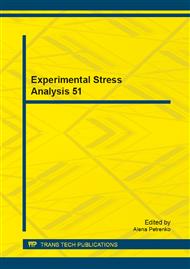p.147
p.151
p.157
p.163
p.167
p.173
p.181
p.189
p.195
Time Progress of Compressive Strength of High Performance Concrete
Abstract:
Development in the field of concrete engineering is increasingly focused on the practical application of high performance concrete (HPC) or ultra-high performance concrete (UHPC) in construction practise. Newly developed kings of concrete are newly using in transport and building structures. The process of hydration of hydraulic binders based on Portland cement doesn ́t stop after 28 days, when the test of compressive strength take place, but it ́s a long time process that takes for many months. For design we use the values of strength of 28 days. This paper explorers how does the long-term development of compressive strength of HPC runs. The composition of HPC is significantly different from the common concrete lower strength classes. The question of the influence of additives, filler on microsilica based, silica flour to the time development of compressive strength is being explored in this paper. There is also recorded the influence of curing condition of the test specimens to the compressive strength. The age of testing samples starts at a very early ages 1, 3, 7, 21, 28, 45, 90 and 180 days. The strength in uniaxial compression was measured on cubes with dimension 100 mm.
Info:
Periodical:
Pages:
167-172
Citation:
Online since:
December 2013
Authors:
Keywords:
Price:
Сopyright:
© 2014 Trans Tech Publications Ltd. All Rights Reserved
Share:
Citation:


